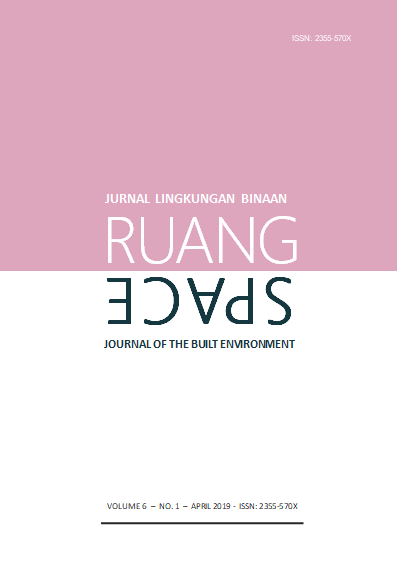Pengaruh Konversi Religi pada Tata Bangunan Rumah Tradisional Bali di Banjar Umacandi Buduk
Abstract
Religious conversion has occurred in the residents of Banjar Umacandi in Buduk Village, Badung Regency, Bali Province since 1930 until now. Majority of the Banjar Umacandi community converted their religion from Hinduism into Christianity due to health, economic, educational and environmental factors. The religion conversion have resulted in the changing of layout of the Balinese traditional houses. Some buildings which are commonly found in the Balinese Hindu traditional houses are not finding in the Balinese Christian homes. A study objective to determine the layout of traditional houses in Banjar Umacandi before and after religious conversion. The method uses in this research is a qualitative phenomenology, by this method all phenomenologies are described in original setting in term of the spatial setting.The supporting data are carried out by the observations, documentations and interview activities. Data is presented in the form of tables, graphs, maps and images, anda discussion with the refference theories. The study result shows that the Balinese Hindu traditional houses layout before religious conversion such as: holy place, bale daja, bale adat, kitchen, jineng, angkul-angkul, natah and teba, which are based on the Sanga Mandala concept but after the religious conversion the layout concept as changed. The holy place and bale adat does not find in the Christian homes, but the angkul-angkul still conserved in the present day. This research is useful for the academic world to expand the repertoire of knowledge about the effects of religious conversion on the building layout of traditional Balinese houses.
Keywords: religious conversion, building layout, Balinese traditional houses
Abstrak
Konversi religi terjadi pada warga di Banjar Umacandi di Desa Buduk, Kabupaten Badung Provinsi Bali sejak tahun 1930 sampai sekarang. Sebagian besar warga Banjar Umacandi melakukan konversi religi dari agama Hindu ke Kristen karena faktor kesehatan, ekonomi, pendidikan dan lingkungan. Konversi religi mengakibatkan perubahan pada tata bangunan rumah tradisional Bali. Beberapa bangunan yang biasa terdapat dalam rumah tradisional Bali tidak ada lagi di rumah umat Kristen. Studi ini bertujuan untuk mengetahui tata bangunan rumah tradisional Bali di Banjar Umacandi sebelum dan sesudah konversi religi. Metode yang digunakan dalam melakukan penelitian ini yaitu kualitatif fenomenologi. Dengan metode ini didiskripsikan fenomena yang ada secara murni dalam hal pengaturan ruang. Data pendukung didapatkan dengan observasi, dokumentasi dan kegiatan wawancara. Data disajikan dalam bentuk tabel, grafik, peta dan gambar kemudian dibahas dengan teori. Dari penelitian ini diperoleh hasil bahwa rumah tradisional Bali sebelum konversi religi terdiri dari: tempat suci, bale daje, bale adat, dapur, jineng, angkul-angkul, natah dan teba, yang berdasarkan konsep sanga mandala tetapi setelah konversi religi konsep tata bangunan berubah. Bangunan tempat suci dan bale adat tidak ada pada rumah umat Kristen, tetapi angkul-angkul masih dilestarikan di masa sekarang. Penelitian ini bermanfaat bagi dunia akademik untuk memperluas khasanah pengetahuan tentang pengaruh konversi religi pada tata bangunan rumah tradisional Bali.
Kata kunci : konversi religi, tata bangunan, rumah tradisional Bali
Downloads
The copyright of the received article shall be assigned to the journal as the publisher of the journal. The intended copyright includes the right to publish the article in various forms (including reprints). The journal maintains the publishing rights to the published articles.



